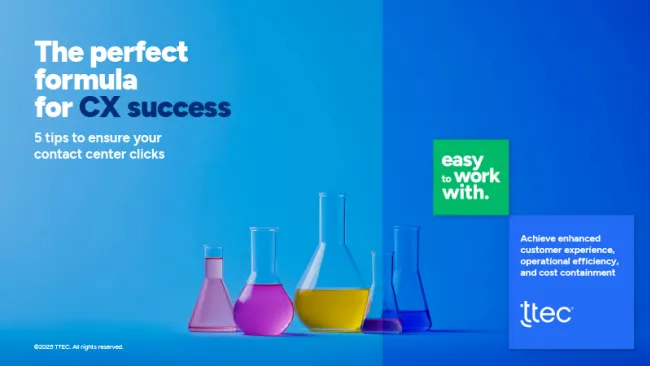Creating an exceptional customer experience is no easy feat. It requires dedication, innovative thinking, integrating massive amounts of data, and implementing cultural changes across the organization. What could go wrong, right?
I have spent much of my career helping clients evaluate, create, and implement strategies for improving the customer experience and increasing sales. And I’ve noticed some patterns in how companies go about implementing those plans and the obstacles they run into. This is the first part of a series in which I’ll review the pitfalls to look out for while moving towards a holistic customer experience.
Ideally, during a CX implementation, companies typically move through the following phases:
- Phase 1: Efforts to improve the customer experience are disconnected and disorganized. There may be multiple individuals championing CX strategies, but they’re not collaborating with each other and there is no formal strategy for transforming the customer experience across the organization.
- Phase 2: A customer experience leader or group of leaders is appointed. Gaps in the customer experience are identified, requirements for improvements are assessed, responsibilities are understood, and an implementation plan for transforming the customer experience is put in place.
- Phase 3: Senior management supports the implementation plan, which is shared with the entire organization. Goals, benchmarks, and performance metrics are defined.
- Phase 4: Customer experience improvements are integrated, documented, and systematized. Employees are as focused on complying with the CX initiatives as on driving profit. This “rubber meets the road” phase is no easy task and is rife with varying complexities, obstacles, and success criteria. The key to Phase 4 is to iterate, adjust, and maximize the “right” investments made, while moving away from those investments that are not yielding return on investment.
- Phase 5: The organization’s culture evolves to the point that employees do the right thing without being asked or requiring incentives. Employees are empowered to take action and propose ideas that help the company exceed customer expectations.
Unfortunately, organizations often get stuck between these phases. Perhaps there’s an agreed upon plan for transforming the customer experience, but it’s built with a lot of dependencies and when one falls through, the plan falls apart.
Rather than remain fixated on one particular obstacle, the CX strategy should be flexible enough to work around it and keep going. It’s important to not lose focus on the ultimate goal—meeting the customer’s needs—even if it means altering the original plan.
For example, in the old days, if a company implemented a big CRM solution that failed, replacing it would be an enormous and expensive headache. Today, there are point solutions, APIs, and customizable features that offer better, faster, and cheaper ways for companies to cost effectively adjust and still achieve their goals.
Unify your CX strategies
The point is to continue moving from the initial disconnected phase into a more unified strategy while keeping in mind that parts of the plan may need to change to keep pace with the customer base, competition, business landscape, etc. Shifting gears in your CX strategy does not necessarily mean that your investments-to-date are sunk.
In an upcoming blog, I’ll review the critical areas that customer experience leaders should be thinking of, which we’ll dive into in future posts.















